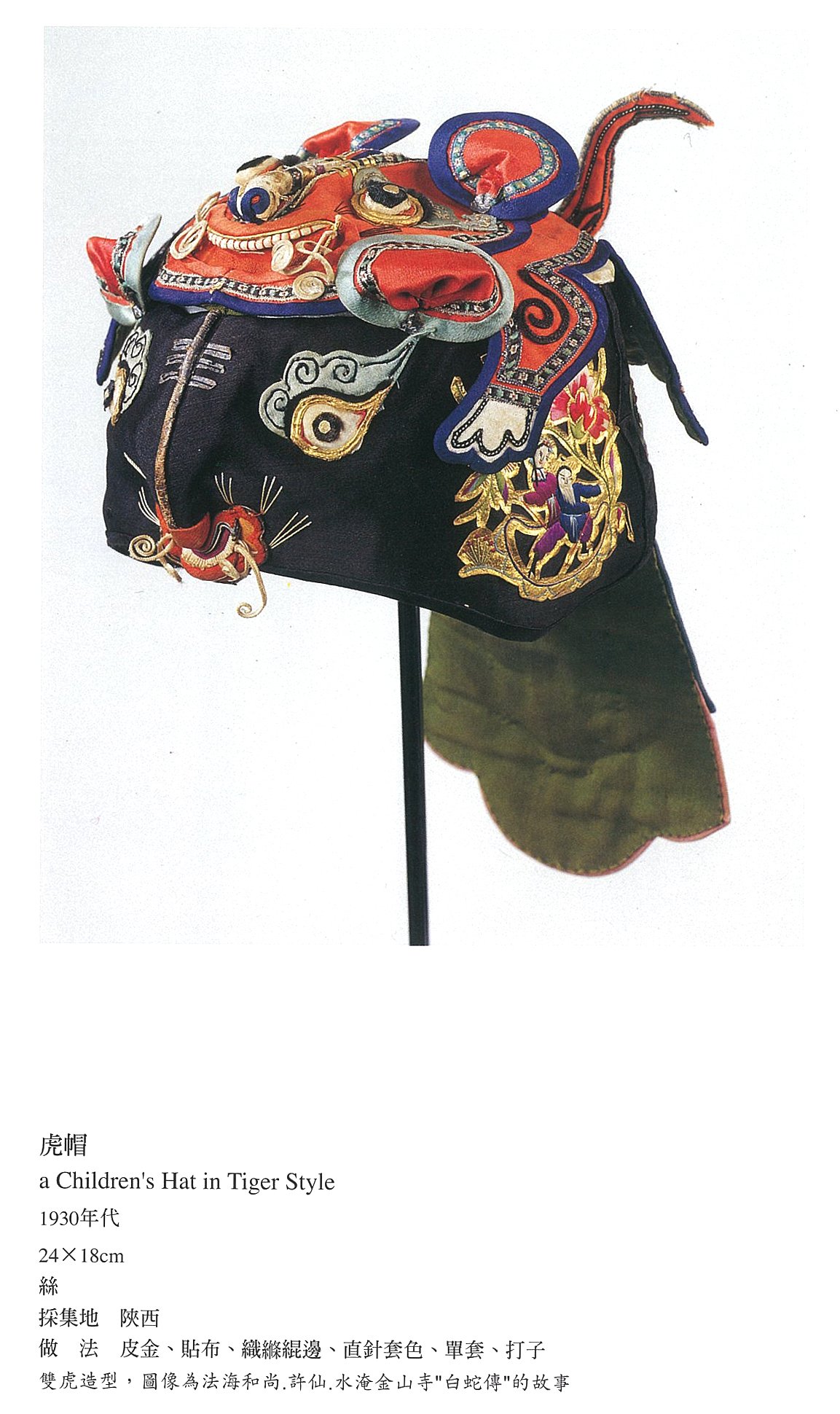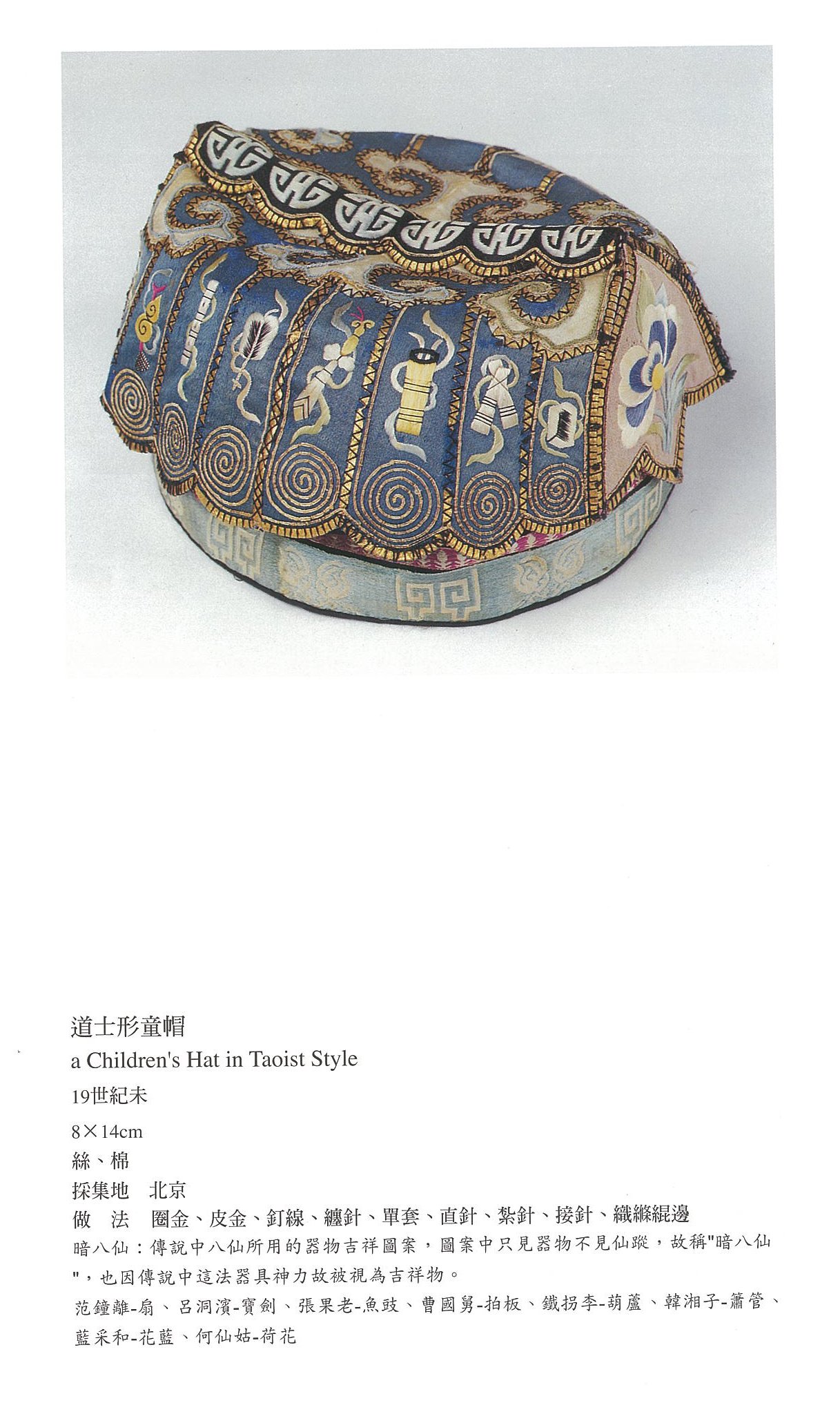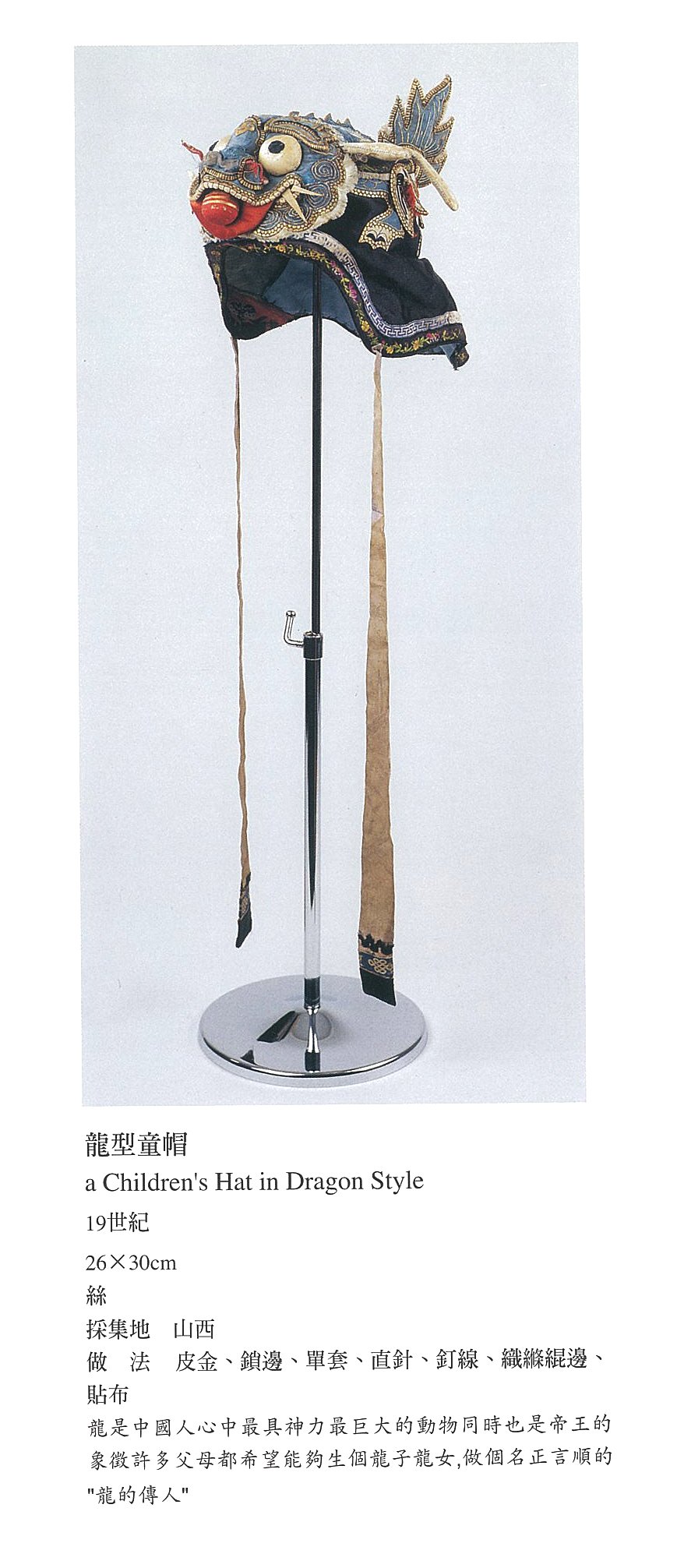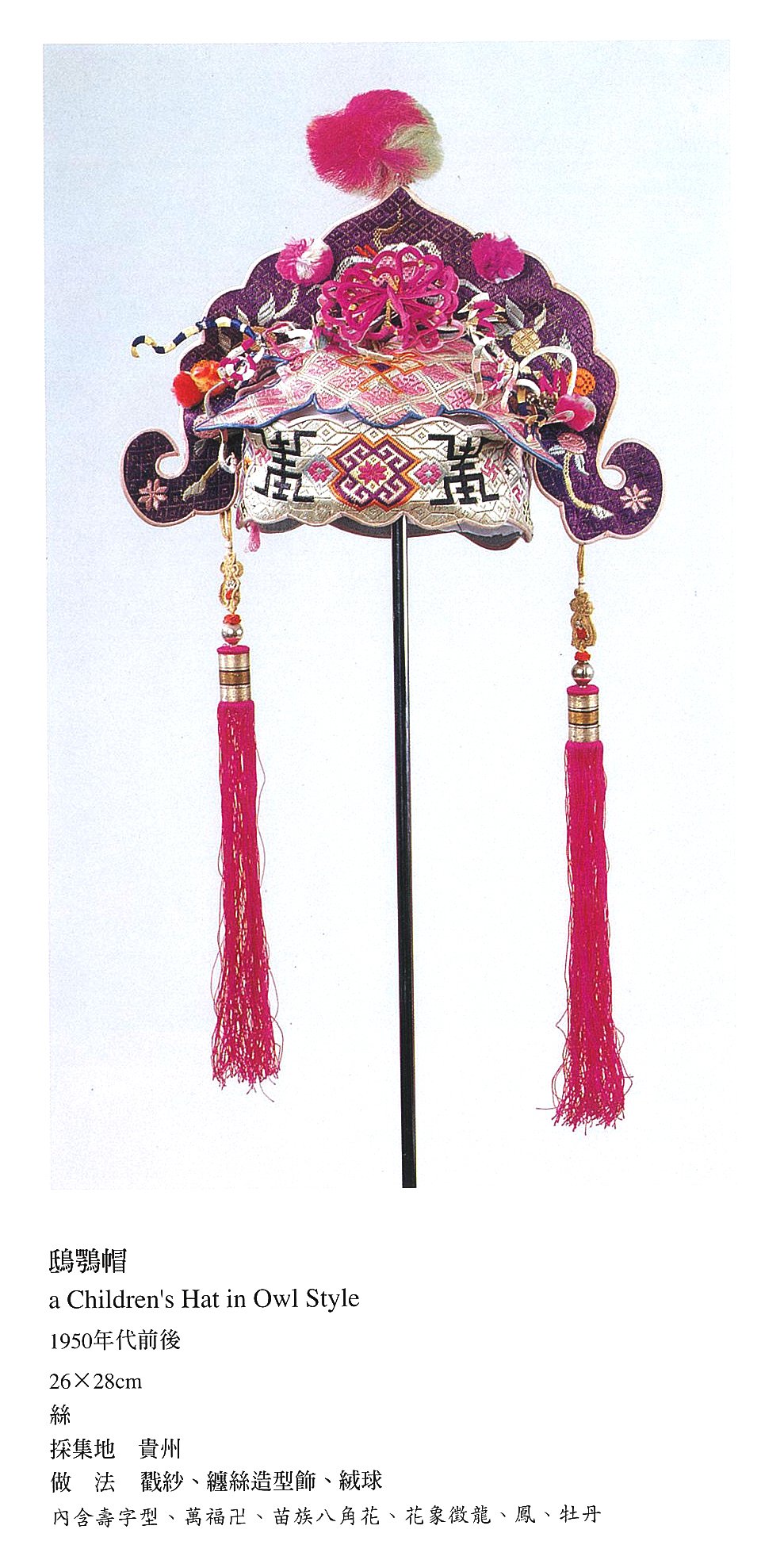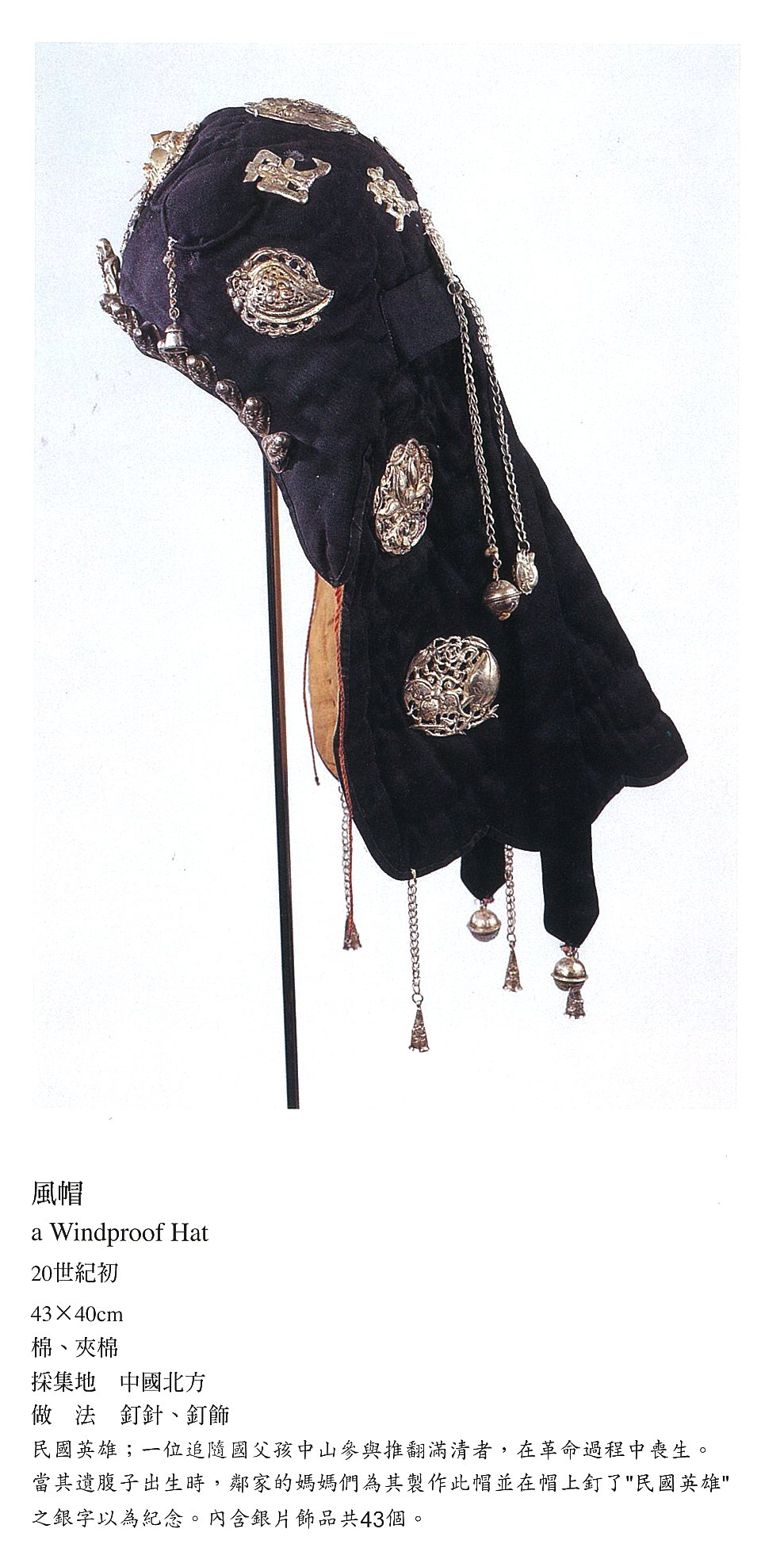Affectionate Handiworks:
Traditional Chinese Women’s Art
National Museum of History
Taipei, Taiwan
4/23/2004 - 5/30/2004
Preface of Exhibition Catalog
In the latter part of the New Stone Age, cave people knew how to use bone needles to sew cloth. A spindle excavated in Xian testifies to the creation of plant fiber threads. There is a close relationship between the needle and thread and Chinese history. With the traditional concept of “men for plowing, women for knitting,” handiworks became the most important responsibility for women.
Handiwork in culture is strongly connected with the life of a woman. Using her handiwork skills would be a way for a woman to show her affection when she became a wife or mother. Whether it was a decoration for the home, toys for holidays, cloth for the New Year or a tribute to the older generations, women’s handiwork warmed family life and continued family traditions. Women’s handiwork was not only a symbol of home life, however; it was also art. Different ideas at different times and different places enabled handiworks, aided by the consummate skills of the craftswomen to become creative and skillful art works, rather than just useful utensils.
This exhibition seeks to convey the affectionate and artistic nature of women’s handiworks by exploring the relationship between traditional rites and the handiwork technique. It also focus on the seven major techniques: sewing, knitting, knotting, weaving, cutting and the making of children’s hats and shoes. Among the objects are traditional handiworks, as well as modern, original creations. THey express the spirit of women’s handiworks, while also providing a visual treat for the viewer.
Director, National Museum of History
Kuang-nan Huang, Ph.D
Excerpt from Collector’s preface:
Children's hats are a folk art, most of which are simply made, with rough features. When I saw a tiger-shaped hat in an antique shop in the 1980s, I was deeply attracted by its lively and adorable shape, and when the store explained that it was sewn by an unknown mother who hoped that her child would be as bright as a tiger and be protected by a tiger, I imagined her embroidering by candlelight, with every stitch full of a mother's infinite love. It was this warmth that inspired this collection.
Collector
Christi Lan Lin

